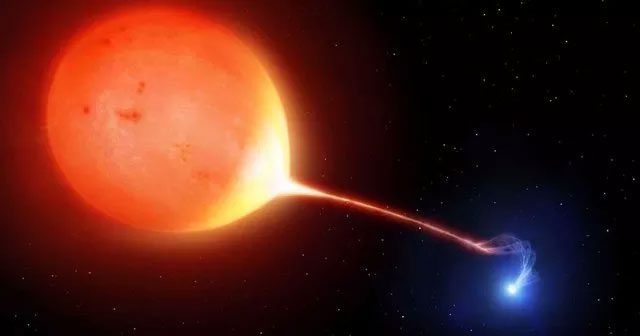A Newly Discovered Type of Stellar Explosion Could Enhance Our Understanding of Thermonuclear Explosions on Dead Stars.
This new phenomenon is termed Micronova, occurring on the surfaces of white dwarf stars that are actively siphoning material from a close binary “companion.” The accumulation of material on the white dwarf leads to a localized thermonuclear explosion: a micronova.
Astronomer Simone Scaringi from Durham University in the UK stated: “This is the first time we have explored and identified what we refer to as a micronova.“

Astronomers report that these explosions have burned through tens to hundreds of tons of stellar material over several hours. Micronova is a type of phenomenon that scientists have only just begun to understand.
“This phenomenon challenges our understanding of how thermonuclear explosions in stars occur. We thought we understood thermonuclear explosions in stars very well, but this discovery proposes a completely new way compared to our previous knowledge.”
White dwarfs in close binary systems can act as thermonuclear explosion engines. A white dwarf is referred to as a “dead” star—its core collapses after a main-sequence star exhausts its fuel and expels its outer material. Other stars of this type may exist in various mass layers, including neutron stars and black holes.
This collapsed core is incredibly dense. White dwarfs can have a mass up to 1.4 times that of the Sun, compressed into a sphere the size of Earth. Many of these can be found in binary systems.

In space, even the smallest explosions can wield tremendous power. A micronova is a newly discovered phenomenon; it may sound like a small explosion, but in reality, it has an explosive force comparable to a nuclear bomb far greater than any bomb ever created by humans.
In rare cases—about 10 instances identified in the Milky Way—binary systems are close enough for the white dwarf to strip material from its companion.
As the two stars orbit each other, material—primarily hydrogen—gets siphoned off from the companion star by the denser and heavier white dwarf. This hydrogen accumulates on the surface of the white dwarf, where it heats up.
Periodically, the mass becomes so substantial that the pressure and temperature at the base of the layer trigger a thermonuclear explosion, violently ejecting the excess material into space. And the micronova is the unique phenomenon that Scaringi and his team have discovered.
The researchers first identified a white dwarf emitting a micronova in data from the Transiting Exoplanet Survey Satellite (TESS). TESS is optimized to search for very slight brightness variations in stars with orbiting exoplanets; a planet passing in front of a star causes a very faint dimming effect.

A micronova is a type of thermonuclear explosion on the surface of a white dwarf that is significantly less intense than a nova; it has a strength of about 1 × 10³⁹, roughly one-millionth of a typical nova. This phenomenon was first described in April 2022.
In the TESS data, the research team discovered the micronova when they detected a flickering light from a white dwarf, rather than a dim light. This prompted them to search for similar events in other white dwarfs. In total, they found three explosions—the third explosion, after further observations, led to the discovery of a previously unknown white dwarf.
Thus, the research team devised a scenario to explain their observations. They found that the most plausible explanation was a micronova.
When a white dwarf has a strong magnetic field in a binary system, it can pull material from its companion. The magnetic field channels this material to the poles of the white dwarf, where it accumulates to eventually cause an explosion.

Hydrogen fuel can be stored at the magnetic poles of some white dwarfs.
Astronomer Paul Groot from Radboud University in the Netherlands noted: “For the first time, we have seen that hydrogen fusion can also occur in a localized manner.”
“Hydrogen fuel can be contained at the magnetic poles of some white dwarfs, thus fusion reactions occur only at these poles. This leads to tiny thermonuclear explosions with a power equivalent to about one-millionth of the supernova explosions we are familiar with, hence the name micronova.”
This discovery could resolve a decades-long mystery. One of the white dwarfs in the binary system TV Columbae has been observed to have similar flickers for over 40 years. The findings suggest that such explosions could be quite common, but astronomers will need to gather more observations to deepen their understanding.
“It just shows how dynamic the universe is,” Scaringi said. “These events can actually be quite common, but because they occur so quickly, they are very hard to observe.”


















































